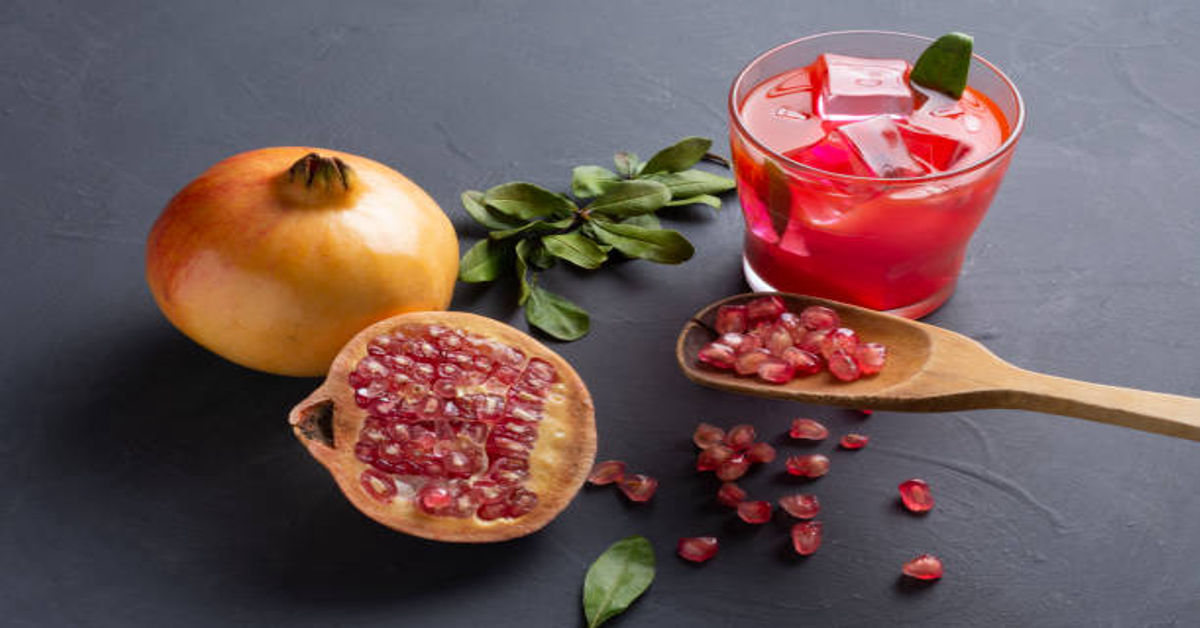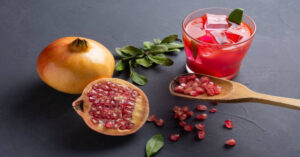Grenadine is a popular syrup known for its deep red color, sweet flavor, and versatility in both cocktails and non-alcoholic beverages. Despite its widespread use in bartending and culinary applications, many people know little about its origins, composition, or health benefits. This comprehensive guide will explore everything from grenadine’s history and production to its applications in drinks, desserts, and culinary creations, along with nutritional information and practical tips for using it effectively.
1. What is Grenadine?
Grenadine is a non-alcoholic syrup characterized by a sweet and slightly tart flavor derived traditionally from pomegranate juice and sugar. Its deep red color and fruity taste make it a staple in both classic and modern cocktails, as well as mocktails. Beyond its flavor, grenadine is valued for its versatility, ability to enhance visual appeal, and compatibility with a wide range of drinks and culinary applications.
Today, commercial grenadine often contains additional ingredients such as high-fructose corn syrup and artificial coloring, but traditional grenadine is made entirely from natural pomegranate juice, sugar, and water.
2. History of Grenadine
The word “grenadine” comes from the French word “grenade”, which means pomegranate. Pomegranates have been cultivated for thousands of years, originating in the region extending from modern-day Iran to northern India.
Historical Timeline:
- Ancient Civilizations: Pomegranates were highly valued in ancient Persia, Egypt, and Greece, often symbolizing fertility and abundance.
- Middle Ages: Pomegranate syrup was used in Europe for both culinary and medicinal purposes.
- 17th–18th Century: Grenadine gained popularity in French cuisine as a sweetener and flavoring agent.
- Modern Era: With the rise of cocktails in the 20th century, grenadine became an essential ingredient in classic drinks such as the Tequila Sunrise and Shirley Temple.
Grenadine has evolved from a traditional pomegranate syrup to a widely recognized ingredient in bars and kitchens worldwide.
3. Traditional vs. Commercial Grenadine
Understanding the difference between traditional and commercial grenadine is important for taste, health, and culinary results.
| Type | Ingredients | Flavor | Color | Notes |
|---|---|---|---|---|
| Traditional | Pomegranate juice, sugar, water | Sweet-tart, natural | Deep red | Natural, rich flavor |
| Commercial | High-fructose corn syrup, artificial flavor, artificial color | Sweeter, less tart | Bright red | Often lacks natural pomegranate taste |
| Homemade | Pomegranate juice, sugar, lemon juice | Sweet-tart, fresh | Bright to dark red | Can be adjusted for sweetness and acidity |
Traditional grenadine provides a more authentic pomegranate taste, while commercial syrups prioritize color and shelf stability. Making grenadine at home ensures freshness, natural flavor, and control over sugar content.
4. Nutritional Value of Grenadine
Grenadine is primarily sugar-based, which means it is high in calories and carbohydrates. However, traditional grenadine made from pomegranate juice contains antioxidants and trace vitamins.
| Nutrient | Amount per 1 tbsp (15 ml) Traditional Grenadine |
|---|---|
| Calories | 50 kcal |
| Carbohydrates | 13 g |
| Sugars | 12 g |
| Protein | 0 g |
| Fat | 0 g |
| Vitamin C | Trace amounts |
| Antioxidants | Moderate (from pomegranate) |
While grenadine adds flavor and color, it should be used in moderation, particularly for those monitoring sugar intake. Homemade versions can slightly reduce sugar content while maintaining the fruity flavor.
5. How to Make Homemade Grenadine
Making grenadine at home is simple and allows for better flavor control.
Ingredients:
- 1 cup pomegranate juice (freshly squeezed or pure)
- 1 cup granulated sugar
- 1 teaspoon lemon juice (optional for brightness)
Instructions:
- Combine pomegranate juice and sugar in a saucepan.
- Heat over medium heat, stirring until sugar dissolves completely.
- Allow the mixture to simmer gently for 10–15 minutes until slightly thickened.
- Add lemon juice to enhance tartness and preserve color.
- Remove from heat and let cool. Store in a clean glass bottle in the refrigerator for up to a month.
This homemade syrup has a natural deep red color and authentic pomegranate flavor, making it perfect for cocktails, mocktails, and desserts.
6. Culinary Uses of Grenadine
Grenadine is not just for drinks; it can also be used in cooking and baking to enhance flavor and color.
6.1. Beverages
- Cocktails: Tequila Sunrise, Shirley Temple, Jack Rose.
- Mocktails: Grenadine with soda, lemonade, or sparkling water.
- Smoothies: Adds sweetness and a fruity layer to blended drinks.
6.2. Desserts
- Drizzle over ice cream, yogurt, or panna cotta.
- Incorporate into cake batters or frostings for color and flavor.
- Use as a glaze for fruit tarts or poached fruits.
6.3. Culinary Recipes
Grenadine can also be used in savory recipes, particularly in Middle Eastern or Mediterranean cuisine:
- Marinades for meats like chicken or lamb.
- Dressings for salads with fruit components.
- Glazes for roasted vegetables to add sweetness and acidity.
Its versatility makes grenadine a valuable ingredient in both sweet and savory dishes.
7. Popular Cocktails Featuring Grenadine
Grenadine is a staple in many classic cocktails and mixed drinks. Its deep red color and sweet-tart flavor make it visually appealing and flavorful.
| Cocktail Name | Ingredients | Description |
|---|---|---|
| Tequila Sunrise | Tequila, orange juice, grenadine | Layered sunrise effect with a sweet finish |
| Shirley Temple | Ginger ale or soda, grenadine, maraschino cherry | Non-alcoholic, sweet and colorful |
| Jack Rose | Applejack, grenadine, lemon juice | Classic cocktail with fruity sweetness |
| Sea Breeze Twist | Vodka, cranberry juice, grenadine | Slightly sweeter variation of a traditional Sea Breeze |
| Pink Lemonade Fizz | Lemonade, sparkling water, grenadine | Refreshing non-alcoholic drink with vibrant color |
Grenadine’s primary role in cocktails is to add both color and subtle fruity sweetness, enhancing the overall flavor profile without overpowering other ingredients.
8. Health Considerations
While grenadine is generally safe for consumption, there are a few considerations:
- High Sugar Content: Excessive consumption may contribute to weight gain or blood sugar spikes.
- Artificial Ingredients in Commercial Syrups: Some store-bought versions include coloring agents and preservatives.
- Allergies: Rare, but those with pomegranate or citrus allergies should check ingredients.
For health-conscious users, homemade grenadine or moderate consumption is recommended. Using it as a flavoring agent in small quantities can provide the benefits of pomegranate antioxidants without excessive sugar.
9. Tips for Using Grenadine Effectively
- Use fresh or high-quality grenadine for best flavor.
- Add grenadine at the end of the mixing process in cocktails to maintain its color.
- Adjust sweetness by mixing with citrus or soda to balance flavors.
- Store in the refrigerator to maintain freshness and color.
- Experiment with recipes beyond drinks, such as desserts and marinades, to expand culinary creativity.
10. Grenadine Substitutes
If grenadine is unavailable, there are alternative ways to achieve a similar flavor and color:
| Substitute | Ingredients | Notes |
|---|---|---|
| Pomegranate Molasses | Reduced pomegranate juice | More tart, less sweet, suitable for savory dishes |
| Raspberry Syrup | Raspberry juice + sugar | Sweeter, slightly different fruity profile |
| Cranberry Juice Reduction | Cranberry juice + sugar | Tart and colorful, works in cocktails |
| Homemade Cherry Syrup | Cherry juice + sugar | Similar sweetness and red color, good for mocktails |
While substitutes can mimic color and sweetness, the unique tart-sweet pomegranate flavor of grenadine is unmatched.
11. Storage and Shelf Life
Proper storage ensures grenadine maintains flavor, color, and quality:
- Refrigeration: Keep in an airtight bottle in the fridge.
- Shelf Life: Homemade grenadine lasts about 1 month, commercial syrups can last several months due to preservatives.
- Freezing: Can be frozen in small portions for extended storage, though some thickening may occur.
Regularly checking for changes in smell, taste, or color is important to ensure the syrup is safe to use.
12. Cultural and Global Usage
Grenadine is used worldwide in various culinary and beverage traditions:
- United States: Predominantly in cocktails and soft drinks.
- France: Traditional grenadine made from pomegranate used in desserts and beverages.
- Middle East: Grenadine-like syrups used in syrups for sweets, pastries, and beverages.
- Asia: Incorporated into modern mocktails and fusion desserts.
Its universal appeal is due to its balance of sweetness, tartness, and vibrant red color.
13. Fun Facts About Grenadine
- The term grenadine is derived from the French word for pomegranate, “grenade.”
- Traditional grenadine is entirely natural, made only from pomegranate juice and sugar.
- It is one of the few syrups that can be used both in alcoholic and non-alcoholic drinks.
- The Shirley Temple, a famous children’s drink, was invented in the 1930s using grenadine.
- Grenadine’s bright red color makes it a visual favorite in layered cocktails like the Tequila Sunrise.
14. Conclusion
Grenadine is a versatile, sweet, and tart syrup that has evolved from a traditional pomegranate syrup to a global culinary staple. Its uses extend beyond cocktails to desserts, marinades, and creative culinary applications. By understanding its history, composition, nutritional aspects, and preparation methods, both professional chefs and home cooks can maximize grenadine’s potential. Whether used for visual appeal, flavor enhancement, or cultural culinary traditions, grenadine remains an indispensable ingredient in kitchens and bars worldwide.
FAQs
1. What is grenadine made from?
Traditional grenadine is made from pomegranate juice, sugar, and water. Commercial versions may include corn syrup and artificial color.
2. Can grenadine be used in non-alcoholic drinks?
Yes, it is commonly used in mocktails such as Shirley Temple, lemonade variations, and soda-based drinks.
3. How should grenadine be stored?
Store in an airtight bottle in the refrigerator; homemade grenadine lasts about a month.
4. Can grenadine be made at home?
Absolutely. Homemade grenadine uses pomegranate juice, sugar, and lemon juice for natural flavor and color.
5. What cocktails use grenadine?
Classic cocktails include Tequila Sunrise, Jack Rose, Shirley Temple, and Sea Breeze Twist, among others.









